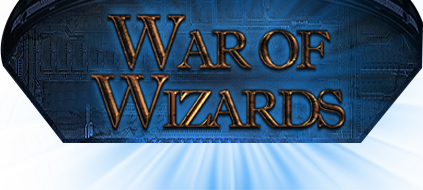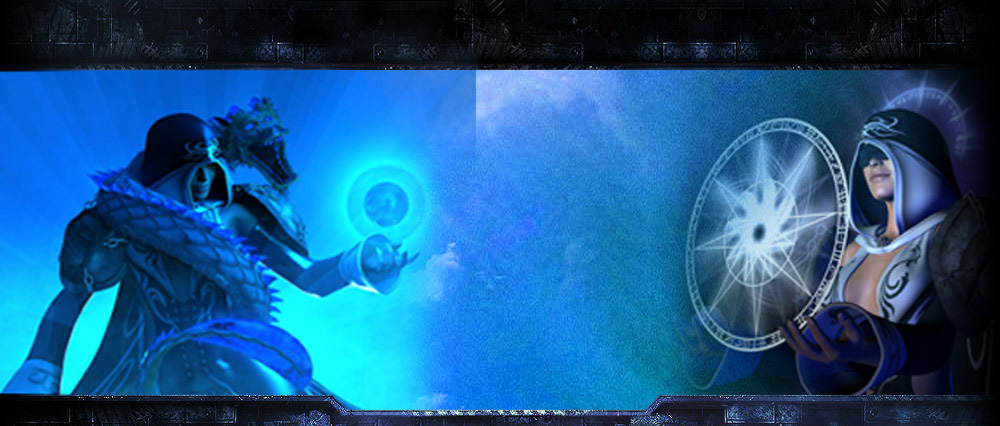9. Magic
Magic will be an important part of any successful player's strategy. The speed and direction of research can make the difference between dominance and self-destruction. Magic is divided into 7 areas of which one area (Druid) is divided into a further 4 areas. Each area has 3 or more levels (this may increase at a later stage), with higher levels allowing more powerful magics. The areas of magic are:
- DARK - The study of evil, fear and pain. Combined with Necromancy has some powerful spells.
- NECROMANCY - The study of death and the awakening of the dead.
- SUMMONING - The study of the spirit world.
- SORCERY - The study of magic itself and its relationship with the universe.
- CONSTRUCT - The creation of artifacts and of embodiment of power in objects.
- WILL - The study of the mind and thought may enable one to control others.
-
DRUID - The power of magic within nature.
- FIRE - The study of the flame and heat.
- WATER - The study of the water and life.
- EARTH - The study of the soil and plants.
- AIR - The study of the wind and moon.
9.1 RESEARCH
Each turn each player will receive a number of research points (RP). Players have a base of 8 RP/turn. This can be increased by hiring apprentices or heroes, constructing certain buildings and finding items in special places such as scrolls. After accumulating sufficient RP (usually turn 4), players may research an area of magic. Players may research as many different areas as they wish, with the only exception being that players who study black (dark and necromancy) magic may not study druidic (fire, water, earth and air) magic and vice versa. The cost to research a level is dependent on the type of magic being researched. It will include a certain amount of research points, gold and gems, with each level costing more to research. Your turn report will tell you what you can research and how much it costs to research. This will be displayed near the research points field of the report when you have enough points to research a level. Several levels of the same area can be researched in the same turn if the costs can be paid.
9.2 SPELLS
Once a magic area has been studied the player will be informed in their turn report of any new spells which they can now use. Spells become available for each area level obtained and sometimes for combinations of levels obtained.
For example, a player with Necromancy Level 2 and Summoning Level 2 may be able to cast a "summon spectre" spell. Part of the fun of the game is discovering spells as the player progresses. It also creates a further advantage in working with other players and sharing spell information. It is also worth noting that all spells will require a base number of GEMs (and extra gems per unit affected in some cases) to cast and a level of Spellcraft.
Spellcraft is the wizard's skill with the magic arts. Each spell has a spellcraft rating, one for easy spells through to ten for the hardest. Every wizard begins with a spellcraft rating of 8. This means the wizard may cast 8 Spellcraft 1 spells, 4 spellcraft 2 spells, etc per turn. To increase spellcraft above 8, wizards may use Research points to RESEARCH SPELLCRAFT. It will be listed as an option on your turn report when you have enough Research Points to do this.
Druid magic is different from other magics in that its PURE druidic spells require more than just gems to cast. They also require elemental objects, which are available in certain special places or may be created. Combination druidic spells do not require these objects. Necromancy spells require the player to have control of a shire containing a graveyard (special place) that has been successfully explored in order to cast them. Raised undead units created with pure necromancy (as opposed to combined spells) will appear in one of the wizard's graveyard shires (randomly chosen).
An important thing to note is that magic cannot be forgotten once researched, so if you choose to study dark magic you will never be able to research the druid magics and vice versa.
Another important note is that a spell can be cast as many times as the wizard likes once they have researched the spell. They just have to have enough gems to cast the spell each time and enough spellcraft points.
9.3 SPELL TYPES
The spells that you will have after researching are broken into a few different types. These are the following.
- Combat Spell - These are used in conjunction with the SPELL order. They are used to set the combat spell of a hero. These are cast at the start of a battle if all the required conditions (such as enough enemies to warrant casting and enough gems) are met. This is the only spell type that doesn't use the wizard's Spellcraft (the exception being a wizard casting a combat spell when his capital is under attack). Instead it uses the spellcraft of the hero for whom the spell is set. A hero's Speelcraft is regenerated at the end of each battle.
- Charm Spells - These spells are used to take partial control of the wandering monsters of WoW and send them into enemy's shires (they appear after movement and hence can not pin units).
- Create Unit - This type of spell will create a unit through summoning or through necromancy. These units usually require gems as maintenance.
- Create Object - This type of spell will create a specific artifact.
- Hero Spell - A spell that the hero can have working all the time. This spell is canceled with the CANCEL order and is set with the CAST order.
- Miscellaneous - This spell will carry out a particular task described in the spell book description that you will receive.

